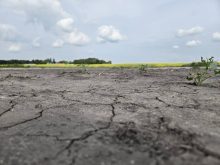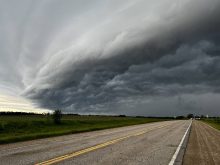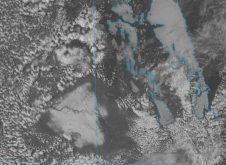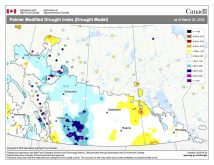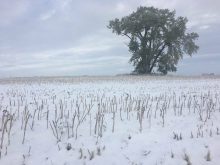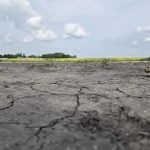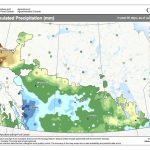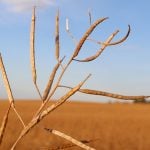Every once in a while the atmosphere behaves in what I call a textbook example. The atmosphere is a fairly chaotic system, that’s why it is so difficult to forecast the weather. If you take the time to read and try to understand how the experts think it all works, you end up learning the ideal setup for any given topic. That is, the atmosphere behaves in so many different ways that in order to write about it we need to come up with a simplified standard, but even then it can be difficult to understand.
Read Also
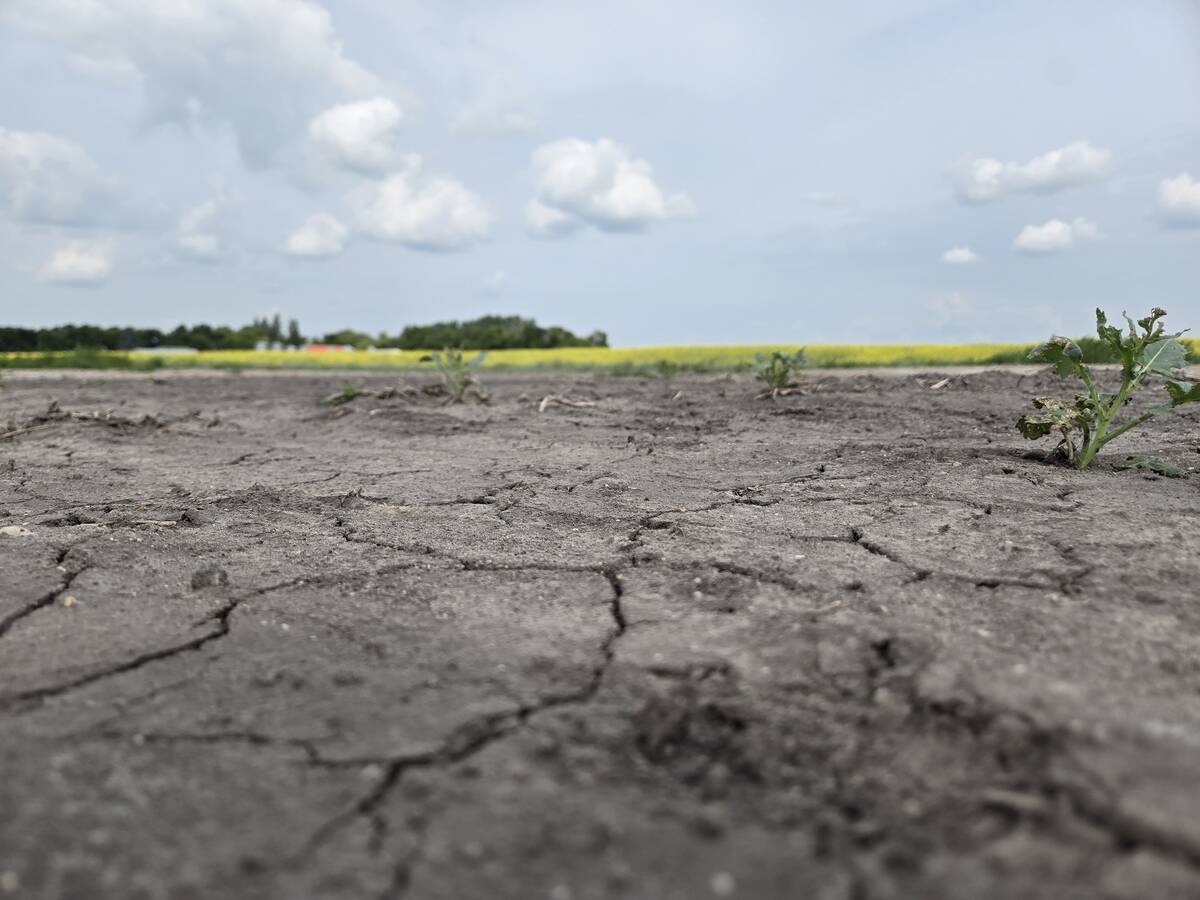
Several Alberta municipalities declare a state of agricultural disaster due to dry conditions
Numerous municipalities in Alberta have declared a state of agricultural disaster due to drought conditions which have wreaked havoc on farmers across the province.
So, when the atmosphere behaves like the examples you’d read about in a textbook I tend to get a little excited. This is exactly what happened during the middle of March across much of Alberta and Saskatchewan and has shown up a couple of times since then. I usually try to avoid writing about this particular topic because it is a tough one to describe and understand. But I figured that since there was a good textbook example of it I would give it a shot. What I am talking about is something called a baroclinic atmosphere.
In the middle to upper levels of the atmosphere the air tends to flow (winds blow) parallel to the lines of pressure. These lines of pressure are known as isobars. When we are looking at this higher up in the atmos-phere these lines are shown as height contours. I don’t have the room to go into a discussion of why this happens, but if you are interested you can do a search on geostrophic winds.
If you were to draw lines on the same map that showed temperature (isotherms) and these isotherms parallel the isobars, or are in alignment with them, then the atmosphere is said to be barotropic. This means that as the air flows from one region to the next the temperature of the air is not changing, i.e., temperatures are fairly uniform and there are no fronts. This type of setup is often found in the tropics.
When the lines of equal height and the isotherms do not run parallel to each other the atmos-phere is said to be baroclinic. Air flowing along the lines of equal height is either flowing from warm to cold or from an area of cold to warm. If the air is flowing from a region that is colder towards a warmer area, we say that cold advection is taking place. If warm air is flowing into a region of cold air then warm advection is occurring.
When cold advection takes place the colder air moving in is denser than the air around it, so it starts to sink downward bringing the cold air to the surface. This downward motion also inhibits the development of clouds and the formation of precipitation.
When warm advection takes place the air moving into a region is less dense than the air around it and will rise. This causes vertical motion in the air. As we know, rising air cools, moisture condenses, clouds form, and if there is enough moisture, precipitation will occur. This is known as baroclinic instability.
This is what developed during the middle of March. A region of high pressure was in place over the northeastern Prairies, while a trough of low pressure developed over the West Coast. This placed much of Alberta and southern Saskatchewan in a baroclinic atmosphere where warm advection was taking place. There was a good amount of baroclinic instability combined with a good feed of moisture resulting in fairly widespread and significant snowfalls. What made this event so textbook was not only the setup, but also that the conditions remained the same over several days, allowing you to really see and understand what was going on. Very often weather conditions change so fast that it makes it hard to understand what is happening.
Hopefully, you now have a little bit better understanding of what a baroclinic atmos-phere is and what forecasters and meteorologists mean when they say warm or cold advection is taking place. I’m not sure what I’ll be discussing in the next issue, but I sure hope it ends up being about warm weather moving in to stay!



